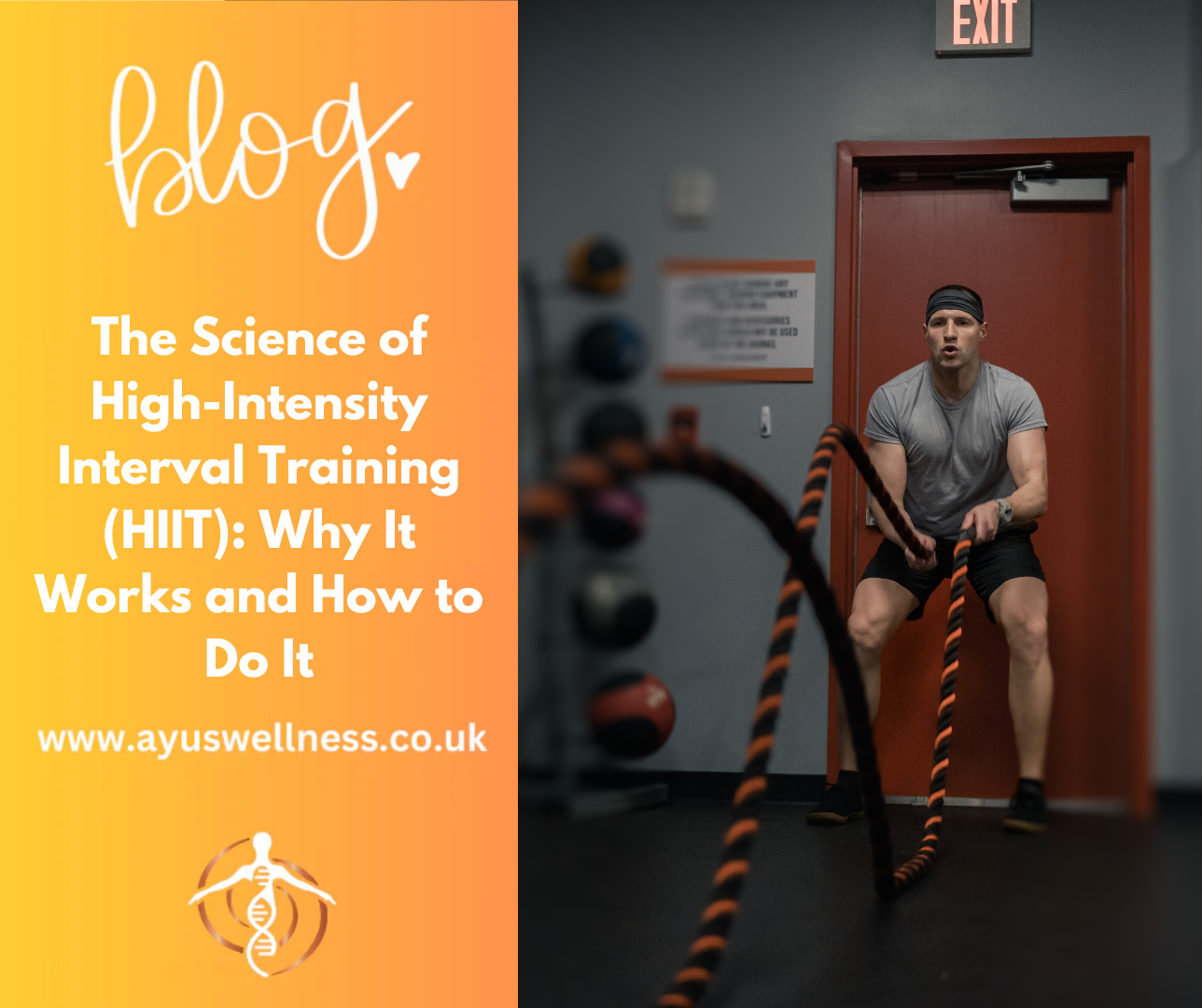
High-Intensity Interval Training (HIIT) has gained popularity for its effectiveness in burning fat and improving fitness levels in a short amount of time. In this blog post, we'll delve into the science behind HIIT, explore why it works, and provide practical tips on how to incorporate it into your fitness routine.
Introduction:
High-Intensity Interval Training (HIIT) is a form of cardiovascular exercise that alternates between short bursts of intense activity and periods of rest or lower-intensity exercise. It's known for its efficiency in burning calories and improving cardiovascular health, making it a popular choice for those with busy schedules.
The Science Behind HIIT:
HIIT works by challenging the body to perform at maximum intensity during short bursts of exercise, followed by brief periods of rest or active recovery. This cycle of intense effort and recovery triggers various physiological responses in the body, leading to numerous health benefits.
Benefits of HIIT:
Increased Calorie Burn: HIIT workouts elevate the heart rate and metabolism, leading to a greater calorie burn both during and after exercise.
Improved Cardiovascular Health: HIIT improves cardiovascular fitness by increasing heart rate variability, improving heart function, and lowering blood pressure and cholesterol levels.
Fat Loss: HIIT promotes fat loss by increasing fat oxidation and stimulating the release of hormones that aid in fat metabolism.
Muscle Preservation: Unlike steady-state cardio, HIIT helps preserve lean muscle mass while promoting fat loss, resulting in a more toned and defined physique.
Time Efficiency: HIIT workouts are typically shorter in duration compared to traditional cardio workouts, making them ideal for those with busy schedules.
How to Do HIIT:
Choose Your Exercises: Select exercises that target large muscle groups and can be performed at high intensity, such as sprinting, cycling, jumping jacks, burpees, and mountain climbers.
Set Your Intervals: Alternate between periods of high-intensity exercise (e.g., 20-30 seconds) and periods of rest or lower-intensity exercise (e.g., 10-15 seconds).
Warm-Up: Begin with a dynamic warm-up to prepare your body for the workout and reduce the risk of injury.
Perform the Workout: Perform each high-intensity interval with maximum effort, focusing on maintaining good form and technique.
Recover: Allow adequate time for rest or active recovery between intervals to lower your heart rate and catch your breath.
Cool Down: Finish the workout with a cooldown to gradually lower your heart rate and stretch your muscles to improve flexibility and reduce muscle soreness.
Conclusion:
High-Intensity Interval Training (HIIT) offers numerous benefits for cardiovascular health, fat loss, and overall fitness. By understanding the science behind HIIT and incorporating it into your fitness routine, you can achieve maximum results in minimal time, making it an efficient and effective workout option for busy individuals.



